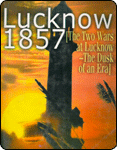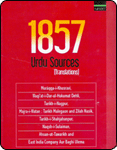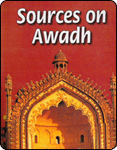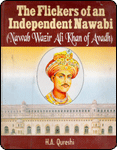Awadh Rulers
The Lesser known History of Lucknow
It is very interesting and draws a very indecisive balance between fortunate and unfortunate on part of any city, whose history of the recent centuries is so highly cherished that people do not wish to even know beyond it. Perhaps that’s the reason that not many noted historians ever took pain of peeping behind the glorious period and present the complete case at a go to those who are keen on knowing the documented history. For some, the myths are good to hear but do not feed the inquisitive minds that asks for evidence. Here I have tried to concisely compose the outlined events that lead us to the present through the documented account of our beloved city Lucknow. The study runs on the basis of evidences from earliest established civilizations through ages of Hindu Empires entering into foot-prints of arrivals of Muslims and finally landing into the history that is widely read.
The earliest probability of the civilization on the areas that today constitutes Lucknow dates to archaeological excavations at the Hulaskhera mound, located on the banks of the Karela Lake in Mohanlalgung ‘tehseel’ which links the city to pre and proto historic times. The six meter high massive mounds cover an area of 80 acres and dates from prehistoric times to the Sunga-Kushar era. The finds also include hoard of silver coins belonging to the period of Vinayak Pal Deva of Kannauj (c.10thcentury AD) that were unearthed by the priest of Kalleshwari Devi Temple near the excavation site. According to the excavation experts and related scholars, the exercise yields archaeological remains of a civilization dating back to 1000 BC though not thoroughly supported by tangible evidences. The remains belong to a prosperous agricultural community that had structured buildings and developed civic system. The antiquarian remains include terracotta gamesmen and figurines, beads, shell beads and ivory bangles. It indicated towards an active socio-cultural environment during the 5th century BC or the period that may be referred as pre-Buddhist. The remains of the buildings indicate the use of concrete structures, belonging to the beginning of AD 400. A 20-metre long road across the Lake has also been encountered which seemed to connect two settlements on either side of the Lake.
The Kushan levels (c. 100 BC to AD 100), yielded number of silver coins and gold-coated glass beads reflects the prosperity of the inhabitants. The terracotta human figurines sporting beards and moustaches may be compared with the Kushan stone sculptures unearthed and stored in the Mathura Museum. Another interesting find includes a stamped gold plaque bearing the image of popular deity Kartikeya, wearing a head-dress with three jewels and holding a spear. The figurine bears testimony to the contact of Hulaskhera with places outside.
The historic phase (AD 40-900) provides evidence of large rooms being converted into smaller units. Even the terracotta figurines indicate a marked decline in the plastic arts. However, the evidence of a brick fort is notable for the remains of large housing complex, which may have been a community centre or a nobleman’s residence. During the early historic period, Lucknow of today and its neighborhood formed part of the once-celebrated Kosala Mahajanapad. In the accounts of Brahamanas and Jatakas, Kosala existed as a territory in the time of King Janaka of Mithila. This region was later included in the Mauryan and Kushan empires. Kushan antiquities including sculptures, large-sized bricks, terracotta and a coin were recovered from the neighborhood of present day Lucknow though no direct references are found in historical narratives and no archaeological findings are found to establish the ancient past of the said period.
Though most of the historical notes on Lucknow predominantly took place with the arrival of Muslims but it does not necessarily draw a conflict in any form on the historical significance of pre-Muslim era. It is both ethical and honest to highlight the said aspect as those who survive on the oxygen of controversies always try to grab the food for thought on such lines. One of the most striking incidents in the post-Pratihara period was the time that witnessed the arrival of Syed Salar Masud Ghazi who was the nephew of Mahmud of Ghazni and son of Syed Salar Sahoo Ghazi. His travels were aimed at publicizing the Islamic teachings but a section of history deals negatively with his character on the mindset mentioned above. Even though Lucknow was just one of the places on his journey that started from Delhi and ended at Bahraich in the year AD 1033, it left a greater impact on this soil as some of his associates are buried here, primarily at Peer Bukhara and Sohbatiya Bagh areas. These graves are still in existence and they mark the earliest footprints of Muslims in this area. The route he adopted from Delhi was via Meerut before reaching Kannauj from where he crossed the Ganges and going through the Navadevakula of Hieun Tsang, the famous Chinese traveler, he passed through Baari Thana, Asiwan, parts of Malihabad before reaching present day Lucknow and moving on to Satrikh where he stayed for a longer period, to be joined with his father. Other surrounding places that came under Muslim dominance during this period were Karra-Manikpur and Hardoi.
The city has been associated with Sultans of Delhi when they annexed to expand their empire and Sultan Iltutmish granted the aqta of Kasmandi and Mandiaon on Malik Tajuddin Sanjar, alias Tabar Khan. Through this assignment, the areas around the city became an integral part of the Sultanate of Delhi. It was the first instance the similar sounding name came into existence by ‘Alakhnau’ along with Avadh and Zafrabad when Muhammad Bin Tughlaq appointed Ainul Mulk as governor of the areas. Lucknow is referred to by the famous Moroccan traveler Ibn-Batuta in connection with the events, which occurred between 1338 and 1341. Delhi was in grip of severe famine, and it was Alakhnau, which supplied large quantities of food grains to the Sultan during his stay at Swargdwari (it was the capital town of Gaharwars, one of the five clans of the Rathore, and is currently the area of Qaimgunj tehseel of Farukkhabad district). Thus, the prosperous condition of Lucknow was responsible for the rebellion of Ainul-Mulk and his brothers, who were suppressed by Muhammad Bin Tughlaq with great difficulty.
In 1394, Khwaja-e-Jahan, the founder of Sharqi dynasty of Jaunpur, brought all the places between Jaunpur and Kannauj under his control. Lucknow became an important station under the Sharqis. Sultan Bahloul Lodi of Delhi annexed Lucknow to his kingdom in 1487-88 and assigned it, along with Kalpi, to his grandson Azam Humayun. It was during his time that a Brahman Lodhan publicly declared that both Islam and Hinduism were true religions, an incident which indicates the liberal outlook of the people of Lucknow, even at such an early date. His bold assertions at that time cost him his life but gave life to a couplet of Mohsin Kakorvi:
“Simt-e-Kaashi Se Chala Jaanib-e-Mathura Baadal
Barq Ke Kaandhay Pe Laayi Hai Saba Ganga-Jal”
During the reign of Sultan Sikander Lodi, Mubarak Khan succeeded Azam Humayun. Later, Ahmad Khan became the governor of Lucknow. He showed unprecedented favors towards Hindus and was accused of idolatry and renunciation of the faith, he was consequently dismissed and arrested on orders of Sultan Sikander Lodi in 1509, Saeed Khan succeeded him as governor of Lucknow.
Then came the brightest period in the history of India and particularly North India that marked the stepping up of the history of centuries to come. In the year 1526 after the battle of Panipat, Zahiruddin Mohammad Babur became the emperor after defeating Ibrahim Lodi. His son Humayun, a Royal prince at that time, occupied Lucknow in the same year. It felt to Afghans for a short period of time when Humayun was engaged with Rana Sanga, Babur reoccupied Lucknow in March 1528 and visited the town on March 21, 1529. Baburnama mentions that Babur crossed the river Gomti on his way to Faizabad and was impressed by its climate and flavors of rice. This fact indicates the political and strategic importance of the region. Lucknow continued to enjoy its affluence. After the empire slipped off the hands of Humayun in 1539, Isa Khan was appointed to restore law and order in the territories lying between Delhi and Lucknow. He also assigned Lucknow to a nobleman, Qadir Shah. Sher Shah raised the status of the city by establishing silver and copper mints at Lucknow for the first time. This was also the period when Humayun was facing in-house troubles from his own brother Kamran Mirza and brother-in-law Mirza Muhammad Zamaan etc. Upon crossing the Ganges around Bilgram, some of the immediate members of Royal family decided to stay away from the ruling elite that was on the move and decided to settle down in the remote areas that are now in Unnao district. These people were directly the Timurid and Chagtai descendants and as per Baburnama and later on Akbarnama of Abul Fazl reports, it was against the wish of Babur as he insisted that Humayun should try his best to maintain peace and harmony with his brothers and close relatives, even if they make mistakes.
By the time Humayun reoccupied Delhi in 1546, Lucknow became a permanent part of the Mughal Empire despite frequent risings by the unruly and desperate Afghan chiefs in the area. During the rule of Akbar (1556-1605), Lucknow witnessed several administrative reforms of far-reaching consequences and it became the headquarters of a sarkar of the suba of Avadh. The copper mint unit was maintained and Akbar is said to have built several mohallas to the south of Chowk. Shahgunj and Mahmud Nagar were some of the earliest localities to have come up during that period.
It was during the peaceful reign of Akbar that Brahmans formed one of the principal sections of the population and the emperor was so well disposed towards them that he favored them with a lakh of rupees. Since then, the Bajpai Brahmans of Lucknow have been both famous and influential. Themohalla conferred upon the Bajpai’s was destroyed during the British rule.
The earliest known Mughal governor of Lucknow, appointed during the reign of Akbar was Husain Khan Tukriya in 1568. He was succeeded by Mahdi Qasim Khan, a mansabdar of four thousand, to whom Akbar gave Lucknow as tuyul. But shortly afterwards in 1572, Lucknow was bestowed on Sikandar Khan, a retired governor of Avadh who died the following year. It was then given to Khwaja Amiruddin Mahmud Khwaja Jahan, who was Wazir-e-Mustaqil of Hindustan, he passed away in 1574. During the closing year of Akbar’s reign Jawahar Khan was subedar of Avadh. His nayib was Qasim Mahmud of Bilgram under whose supervision the areas of Shahgunj and Mahmud Nagar were built along with Akbari Darwaza.
Thereafter, it was time for the Shaikzadas to gain the proximity to the Royal court via all the prevalent practices of the time reports Akbarnama. Abdur Rahim Bijnori used the relation of his friend Jamal Bakhtiyar’s sister to reach the Royal court and that impressed the emperor Akbar so much so that Shaikh Abdur Rahim was invited at one of the Royal gatherings at Sialkot. It was here in Sialkot in the year 1586 that in state of intoxication, Abdur Rahim stabbed himself that upset the emperor. After a period of 12 years in the year 1598, he paid another visit to the Royal court of Akbar and pacified the relations. It was a symbol of Akbar’s consideration towards the Shaikh that resulted in construction of Machchhi Bhavan and Panch Mahal at Lucknow. As per the Ain-e-Akbari and Ma’asirul Umara, Shaikh Abdur Rahim had married a Brahmin female by name of Kishna who carried the noble practices, maintained a garden, a sarai, acquired a number of villages and carried her works for nearly sixty years, even after the death of Shaikh, who was laid to rest at Nadal Mahal. Lucknow, she continued to have the influence of his descendants in line with their good relations with the ruling Royals at Delhi and continued to have periodical jagirs from later Mughals.
Abul Fazl in his Akbarnama has thrown light on rising importance of Lucknow by virtue of its climate and vegetation, it became a part of the sarkar of that time in the suba of Avadh. The development of Avadh continued unhampered during the time of Emperor Jahangir (r. 1605-1627). Jahangir is reported to have visited Lucknow during lifetime of Akbar and founded Mirza Mandi to the west of Machchhi Bhavan. The European traveler De-Laet testifies to the fact that Lucknow was a thriving centre of trade, a Magnum Emporium in the reign of Jahangir. It was during these days, a French merchant obtained a permit for one-year to conduct commercial trade in the region. This trade amassed an immense fortune, part of which was used to build a mansion. Upon expiry of the permit, the said mansion was confiscated and given a name of Farangi Mahal as it was built by foreigners, known at that time as Farangis. This Farangi Mahal was later awarded to a learned family of Mulla Qutubuddin during the time of Aurangzeb and became a seat of Islamic teachings and scholars. Another feather to Lucknow, as per Tuzuk-e-Jahangiri was the allotment of lands in the adjoining areas of Lucknow to those who belonged to the members of Timurid & Chagtai descent and had reached the area in the early days with Babur & Humayun. Primarily, these people belong to the families of those neutral members who left the Royal camp during the unrest between Humayun, his brothers and immediate family members.
With the passage of time, the rule of Jahangir came to an end and Emperor Shahjahan (r. 1627-1658) came to the throne of Delhi. He appointed Sultan Ali Shah Quli Khan as governor of Avadh. Quli Khan’s sons, Mirza Fazil and Mirza Mansur founded Fazil Nagar and Mansur Nagar to the south-west of Akbari Darwaza. Subsequently, the governorship of Avadh came to Mutamad Khan Muhammad Sharif whose brother Muhammad Ashraf built magnificent buildings and founded the areas of Ashrafabad towards the south of Shahgunj and Musharrafabad or Naubasta (new locality). These areas were thickly populated by distinguished Brahmins, Kayasths and other families. He laid out a garden and as per the chronogram on the gates of this garden, it was named as Bustan-e-Dostaan (garden of friends). Another noble, Peer Khan founded the area of Garhi Peer Khan to the west of the city.
Saiyid Nizam Murtaza Khan, son of famous Sadr Jahan of Pihani was also appointed Faujdar of Lucknow by Shahjahan. The old copper mint continued to function during the reign of Shahjahan. The English factory records from 1646 to 1654 show that English factors at the time were doing brisk business in sugar, indigo and calico at Lucknow. Cloth were bleached at Lucknow and then forwarded to important trade centers in India.
Emperor Aurangzeb is reported to have visited Lucknow and ordered the construction of the impressive mosque on the higher bank of river Gomti. A contemporary scholar and Islamic saint, Shaikh Pir Muhammad of Jaunpur lies buried in a square tomb to the north-east of the mosque. His learning and piety attracted large numbers of students and scholars from different parts of the country and his manuscripts are preserved in the Rampur Raza Library. The school founded by him remained a center of learning for about a century after his death in 1668.
During the reign of Aurangzeb, the noted governors were Irij Khan and then Jamal Khan. After Aurangzeb died in 1707, the Mughal Empire that had only six emperors in nearly 180 years, witnessed as many as eleven rulers in next 150 years to come. During the reign of Muhammad Shah, Girdhar Nagar, the son of Daya Bahadur became the subedar of Avadh. He was the nephew of Chhabila Ram Nagar, the governor of Allahabad. The wife of Girdhar Nagar founded the area of Rani Katra to the east of Daulat Gung.
By the year 1722, Muhammad Shah appointed Burhan-ul-Mulk Sa’adat Khan as the Nayib of Avadh that laid the foundation of Nawabi for 125 years to come.
Upon deputation by the Mughal Ruler Mohammad Shah, Sa’dat Khan was appointed the Nayib for the province of Avadh.
List of the Nawabs of Avadh with their titles and period
1- Wazeer ul Mulk
Burhan-ul-Mulk Meer Muhammad Ameen Musawi Sa’adat Khan
1722-1739
2- Subedar Nawab
Abul Mansur Muhammad Muqeem Khan Safdarjung
1739-1748
Nawab Wazir ul Mumalik
1748-1754
3- Subedaar Nawab
Jalaluddin Shuja’a ud daula Hyder
1754-1762
Nawab Wazir ul Mumalik
1762-1775
4- Nawab Wazir ul Mumalik
Asif ud daula Muhammad Yahia Amani
1775-1797
5- Nawab Wazir ul Mumalik
Mirza Wazir Ali
1797-1798
6- Nawab Wazir ul Mumalik
Yameen ud daula Naazim ul Mulk Sa’adat Ali Khan II
1798-1814
7- Nawab Wazir ul Mumalik
Ghazi ud din Rafa’a ud daula Abul Muzaffar Hyder Khan
1814-1818
Badshah-e-Avadh Shah-e-Zaman
1818-1827
8- Badshah-e-Avadh Shah-e-Zaman
Naseer ud din Hyder Sulaiman Jaah
1827-1837
9- Badshah-e-Avadh Shah-e-Zaman
Moin ud din Abul Fateh Muhammad Ali Shah
1837-1842
10- Badshah-e-Avadh Shah-e-Zaman
Naasir ud daula Amjad Ali Shah Suraiyyah Jaah
1842-1847
11- Badshah-e-Avadh Shah-e-Zaman
Naasir ud din Abul Mansoor Muhammad Wajid Ali Shah
1847-1856
On February 05, 1856, the King was deposed and Avadh was incorporated into British Empire. However, the rebellion had taken place at Lucknow and Berjis Qadr declared his rule that continued till March 08, 1858.
Once Lucknow as a part of Avadh was incorporated into British rule, it got under the control of officers as follows:
Chief Commissioners of Oudh (1856 – 1877)
Maj. Gen. Sir James Outram Feb 01, 1856 – May 08, 1856
Colville Coverly Jackson May 08, 1856 – Mar 21, 1857
Maj. Gen Sir Henry Montgomery Lawrence Mar 21, 1857 – Jul 05, 1857
Maj. John Sherbroke Banks Jul 05, 1857 – Sep 11, 1857
Lt. Gen. Sir James Outram Sep 11, 1857 – Apr 03, 1858
Robert Montgomery Apr 03, 1858 – Feb 15, 1859
Charles John Wingfield Feb 15, 1859 – Apr 20, 1860
Lt. Col. Lousada Barrow Apr 20, 1860 – Apr 04, 1861
George Udny Yule Apr 04, 1861 – Aug 26, 1865
Richard Hutton Davies Aug 26, 1865 – Mar 17, 1866
Sir John Strachey Mar 17, 1866 – May 24, 1868
R.H. Davies May 24, 1868 – Jan 18, 1871
Maj. Gen. Lousada Barrow Jan 18, 1871 – Apr 20, 1871
Sir George Couper Apr 20, 1871 – Mar 15, 1875
John Forbes David Inglis Mar 15, 1875 – Feb 15, 1877
Lieutenant Governors of the North-Western Provinces and Chief Commissioners of Oudh (1877–1902)
Sir George Ebenezer Wilson Couper Feb 15, 1877 - Apr 17, 1882
Sir Alfred Comyn Lyall Apr 17, 1882 – Nov 21, 1887
Sir Auckland Colvin Nov 21, 1887 – Nov 28, 1892
Sir Charles Haukes Todd Crosthwaite Nov 28, 1892 – Jan 09, 1895
Alan Cadell Jan 09, 1895 – Nov 06, 1895
Sir Anthony Patrick MacDonnell Nov 06, 1895 – Nov 14, 1901
Sir James John Digges La Touche Nov 14, 1901 – Mar 22, 1902
Lieutenant Governors of the United Provinces of Agra and Oudh (1902–1921)
Sir James John Digges La Touche Mar 22, 1902 – Jan 01, 1907
Sir John Prescott Hewett Jan 01, 1907 – Sep 15, 1912
Sir James Scorgie Meston Sep 15, 1912 – Feb 07, 1917
John Mitchell Holmes Feb 07, 1917 – Feb 15, 1918
Sir Spencer Hartcourt Butler Feb 15, 1918 – Jan 03, 1921
Governors of the United Provinces of British India (1921–1937)
Sir Spencer Hartcourt Butler Jan 03, 1921 – Dec 21, 1922
Sir William Sinclair Marris Dec 24, 1922 – Jan 14, 1927
Sir Alexander Phillips Muddiman Jun 14, 1927 – Jun 17, 1928
Sir William Malcom Hailey Aug 09, 1028 – Dec 06, 1934
Sir Harry Graham Haig Dec 06, 1934 – Apr 01, 1937
Governors of the United Provinces (1937–1947)
Sir Harry Graham Haig Apr 01, 1937 – Dec 07, 1939
Sir Maurice Garnier Hallet Dec 07, 1939 – Dec 07, 1945
Sir Francis Verner Wylie Dec 07, 1945 – Aug 14, 1947
On Aug 15, 1947 India became independent of the British rule
Governors of the United Provinces of Independent India (1947-1950)
Sarojini Naidu Aug 15, 1947 – Mar 02, 1949
Hormasji Peroshaw Mody May 02, 1949 – Jan 25, 1950
The province was renamed as Uttar Pradesh on Jan 26, 1950 which is known as Republic Day of India. Thereafter, the constitutional head of the state is known as Governor.
Governors of Uttar Pradesh (1947 – incumbent )
Hormasji Peroshaw Mody Jan 26, 1950 – Jun 01, 1952
Kanhaiyalal Manaklal Munshi Jun 02, 1952 – Jun 09, 1957
Varah Giri Venkat Giri Jun 10, 1957 – Jun 30, 1960
Dr. Bragula Rama Krishna Rao Jul 01, 1960 – Apr 15, 1962
Biswanath Das Apr 16, 1962 – Apr 30, 1967
Dr. Bezwada Gopala Reddy May 01, 1967 – Jun 30, 1972
Shashi Kant Varma (acting) Jul 01, 1972 – Nov 13, 1972
Akbar Ali Khan Nov 14, 1972 – Oct 24, 1974
Dr. Marri Channa Reddy Oct 25, 1974 – Oct 01, 1977
Ganpatrao Devji Tapse Oct 02, 1977 – Feb 27, 1980
Chandeswar Prasad Narain Singh Feb 28, 1980 – Mar 31, 1985
Mohammed Usman Arif Mar 31, 1985 – Feb 11, 1990
B. Satya Narayan Reddy Feb 12, 1990 – May 26, 1993
Motilal Vora May 27, 1993 – May 02, 1996
Mohammed Shafi Qureshi May 03, 1996 – Jul 19. 1996
Romesh Bhandari Jul 19, 1996 – Mar 16, 1998
Mohammed Shafi Qureshi Mar 17, 1998 – Apr 19, 1998
Suraj Bhan Apr 20, 1998 – Nov 23, 2000
Vishnu Kant Shastri Nov 24, 2000 – Jul 02, 2004
Sudarshan Agarwal Jul 03, 2004 – Jul 07, 2004
T.V.Rajeshwar Jul 08, 2004 – Jul 27, 2009
Banwari Lal Joshi Jul 28, 2009 – till date
(Above is an excerpt from an under print title “Lucknow – Ethnography” and is copyrighted)
Comments





